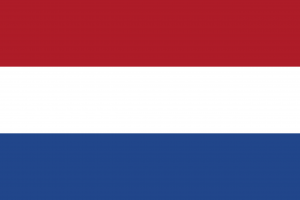Difference between revisions of "Language/Dutch/Grammar/Comparison-of-Adjectives-and-Adverbs"
m (Quick edit) |
m (Quick edit) |
||
| Line 117: | Line 117: | ||
[[Category:0-to-A1-Course]] | [[Category:0-to-A1-Course]] | ||
[[Category:Dutch-0-to-A1-Course]] | [[Category:Dutch-0-to-A1-Course]] | ||
==Related Lessons== | |||
* [[Language/Dutch/Grammar/Interrogative-words-in-Dutch|Interrogative words in Dutch]] | |||
* [[Language/Dutch/Grammar/How-to-use-“to-speak”-in-Dutch|How to use “to speak” in Dutch]] | |||
* [[Language/Dutch/Grammar/Plural-and-Diminutives|Plural and Diminutives]] | |||
* [[Language/Dutch/Grammar/Indefinite-Articles-in-Dutch|Indefinite Articles in Dutch]] | |||
* [[Language/Dutch/Grammar/Vowels-and-Consonants|Vowels and Consonants]] | |||
* [[Language/Dutch/Grammar/Greetings-in-Dutch|Greetings in Dutch]] | |||
* [[Language/Dutch/Grammar/Questions|Questions]] | |||
* [[Language/Dutch/Grammar/Adjectives|Adjectives]] | |||
* [[Language/Dutch/Grammar/0-to-A1-Course|0 to A1 Course]] | |||
{{Dutch-Page-Bottom}} | {{Dutch-Page-Bottom}} | ||
Revision as of 13:03, 12 March 2023
As a Dutch language teacher with over 20 years of experience, I am excited to teach you about the comparison of adjectives and adverbs in Dutch. Understanding this grammar concept will allow you to describe nouns and verbs more accurately, as well as add more complexity to your sentences. Let's get started!
Comparative Forms
Comparative forms are used to compare two things, people or actions. In Dutch, adjectives and adverbs have two comparative forms:
- Comparative form 1: "meer" + [adjective/adverb]
- Comparative form 2: [adjective/adverb] + "-er" + "dan"
Let's see some examples:
| Dutch | Pronunciation | English |
|---|---|---|
| snel | snɛl | fast |
| sneller | 'snɛlər | faster |
| meer snel | me:r snɛl | more fast |
| groot | ɣrot | big |
| groter | 'ɣrotər | bigger |
| meer groot | me:r ɣrot | more big |
As you can see, when using the first comparative form, we add "meer" before the adjective or adverb. For example, "meer snel" means "more fast". The second comparative form is formed by adding "-er" at the end of the adjective or adverb, followed by "dan", which means "than". For example, "snel" becomes "sneller", meaning "faster", and "sneller dan" means "faster than".
Superlative Forms
Superlative forms are used to compare three or more things, people or actions. In Dutch, adjectives and adverbs have two superlative forms:
- Superlative form 1: "meest" + [adjective/adverb]
- Superlative form 2: [adjective/adverb] + "-st" + "e"
Let's see some examples:
| Dutch | Pronunciation | English |
|---|---|---|
| snel | snɛl | fast |
| snelst | 'snɛlst | fastest |
| meest snel | mest snɛl | most fast |
| groot | ɣrot | big |
| grootst | 'ɣrotst | biggest |
| meest groot | mest ɣrot | most big |
Here, you can see that the first superlative form is formed by adding "meest" before the adjective or adverb. For example, "meest snel" means "most fast". The second superlative form is formed by adding "-st" at the end of the adjective or adverb, followed by "e", which means "the". For example, "snel" becomes "snelst", meaning "fastest", and "de snelst" means "the fastest".
Irregular Forms
Like English, Dutch also has some irregular forms of comparatives and superlatives. These include:
- goed (good) → beter (better) → best (best)
- veel (much/many) → meer (more) → meest (most)
- graag (like/would like) → liever (prefer) → liefst (preferably)
Placement of Adjectives and Adverbs
In Dutch, adjectives usually come before the noun, while adverbs come after the verb. However, when using the comparative and superlative forms, the adjective or adverb comes before "meer" or "meest", and after "-er" or "-st".
For example:
- "De grotere boom" (The bigger tree), "het grootste huis" (The biggest house)
- "Meer snelheid" (More speed), "de snelste auto" (The fastest car)
Practice Exercises
Now that we have learned about comparatives and superlatives in Dutch, let's practice a little bit! Complete the following sentences with the correct form of the given adjective or adverb:
1. Dit huis is __ (klein) dan ons oude huis. 2. Marjan is __ (mooi) dan al haar vriendinnen. 3. Mijn computer is __ (snel) dan die van mijn vriend. 4. Gisteren was het __ (warm) dan vandaag. 5. Hij is __ (grappig) dan zijn broer.
Answers:
1. kleiner 2. mooier 3. sneller 4. warmer 5. grappiger
Conclusion
Congratulations! You now know how to use comparative and superlative forms of Dutch adjectives and adverbs. Keep practicing, and don't be afraid to make mistakes. Remember, learning a new language takes time and effort, but it can also be a lot of fun!
Sources
{{#seo: |title=Dutch Grammar → Adjectives and Adverbs → Comparison of Adjectives and Adverbs |keywords=Dutch grammar, Dutch language, Comparison of Adje
Related Lessons
- Interrogative words in Dutch
- How to use “to speak” in Dutch
- Plural and Diminutives
- Indefinite Articles in Dutch
- Vowels and Consonants
- Greetings in Dutch
- Questions
- Adjectives
- 0 to A1 Course
